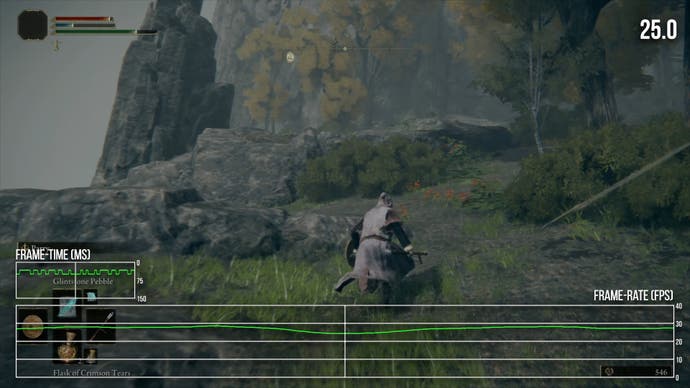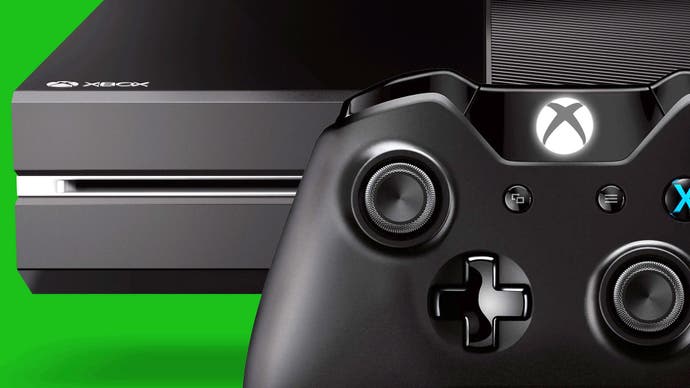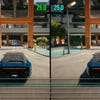Does the original Xbox One still have what it takes to run modern cross-gen games?
Xbox One S struggles - so where does that leave the original, slower model?
The original Xbox One launched in 2013 as an all-in-one entertainment box with a Kinect sensor, broadcast TV integration and an imposing £429/$499 USD price tag. Its ambitions as a multimedia centre were high - but it came at a cost. Xbox One was underpowered due to a DDR3/ESRAM memory system with less bandwidth overal than the GDDR5-equipped PS4 and substantially lower GPU compute performance. The 2016 launch of Xbox One S was an improvement, not just in terms of form-factor but in performance too, thanks to a GPU 'overclock'. All of which raises the question: how does the vintage 2013 model perform when challenged with the latest cross-gen games? If Xbox One S is struggling - which it is - does that mean that owners of the OG model get an even less impressive experience? We decided to find out.
First up, let's refresh ourselves on the differences between the original Xbox One unit, codenamed Durango and its One S successor (known internally as Edmonton). While broadly similar to the original unit, the One S features a higher-clocked GPU, taking the GCN-based design from 853MHz to 914MHz, a 7.1 percent increase in frequency and GPU compute, while memory bandwidth on the integrated ESRAM increases from 204GB/s to 219GB/s. Plus, the new console came with a bevy of new display features owing to its support for the HDMI 2.0 output standard. The GPU improvements here weren't massive but they gave the performance-starved console a bit more overhead to deal with demanding games.
This new system replaced the original Xbox One for our cross-platform analyses at some point during 2017 and hasn't been revisited since - and by extension, we have to wonder to what extent the older machine gets full QA support on the developer side in a world where the vast majority of Xbox One machines out there are the newer S model.
| Xbox One hardware specs | Xbox One | Xbox One S |
|---|---|---|
| GPU | 1.31TF AMD (12 CUs at 853MHz) |
1.40TF AMD (12 CUs at 914MHz) |
| CPU | AMD Jaguar (8 cores at 1.75GHz) |
AMD Jaguar (8 cores at 1.75GHz) |
| Memory | 8GB DDR3 at 68.3GB/s 32MB ESRAM at 204GB/s |
8GB DDR3 at 68.3GB/s 32MB ESRAM at 219GB/s |
| Storage | 500GB 5400RPM HDD | 500GB 5400RPM HDD |
| HDR, VRR, 4K output | No | Yes |
It's time to get testing. The Xbox One we tested is an original 2013 unit, purchased shortly after launch and used nearly continuously - a nearly nine-year-old console that ought to be showing its age. This is the weakest officially-supported hardware that can run the likes of Cyberpunk 2077, Battlefield 2042 and Elden Ring, blockbuster titles that can have performance problems on even the fastest of the current-gen consoles. In our tests, showcased in full in the video above, we captured seven recent games to see exactly how the One holds up against titles that increasingly seem to be targeting far superior current-gen hardware.
Broadly, games on Xbox One seem to fall into two camps: those that run OK despite some shortcomings and those that suffer and clearly don't hit their performance targets. Forza Horizon 5 and Grid Legends are great examples of the former category. There are some rough edges here and there, such as streaming hitches when travelling at high speed in Forza or low frame-rate replays in Grid, but by and large, you can enjoy a perfectly playable experience on the original Xbox One, albeit at a lower resolution and frame-rate than later Xbox consoles.

The other - and unfortunately larger - category reveals a systemic problem with games on the Xbox One, where too often frame-rates are low even in less demanding scenes, stutters are commonplace and judder often demands VRR to smooth out - which, as you'll recall, isn't an option on the original Xbox One. Cyberpunk 2077, Call of Duty Vanguard, Battlefield 2042, Elden Ring and Tales of Arise all suffer from these performance issues and in many cases graphical fidelity ought to have been sacrificed to hit a more stable frame-rate.
Of course, we can't tell by testing Xbox One alone whether this is specific to the original 2013 hardware, or whether it's something also experienced on the newer One S - so we also ran a series of performance tests on both consoles to find out.
We know that the GPU clock has been increased by 7.1 percent on the Xbox One S, which should produce a measurable performance gap between these two machines - but the increase in ESRAM bandwidth should also improve frame-rates too. Tales of Arise is a good test case, as it meets three important criteria for evaluating the hardware differences: it's generally GPU-limited, with an unlocked frame-rate to easily observe performance fluctuations and a static resolution so the rendering workload should be identical across the consoles in matching footage. The clock increase translates to roughly a two to four frames per second higher frame-rate in matching areas, which is roughly in line with the clock speed increase.
In other titles, the results are understandably less consistent. Cyberpunk 2077, for example, runs substantially better on the One S in scenes that seem to be more GPU-limited, but elsewhere the streaming demands stress out the CPU and leave the two machines on even footing. Elden Ring is much the same, and doesn't seem to show meaningful performance differences when navigating the open world. Generally, if a game is CPU-limited, or if a game supports a dynamic resolution system, frame-rates should be similar between the two machines.
Apart from out-and-out performance, game load times are also problematic on the original Xbox One, with our testing revealing significantly longer load times in some games - Forza Horizon 5, for instance, loads 35 percent faster on the One S versus the OG One, and we see measurable differences in Far Cry 6 and CrossfireX too. The results here are unexpected and intriguing and we can offer two potential explanations. Firstly, that the specs of the hard drives may be different, with the One S featuring a more modern, higher performance HDD. The other potential explanation is that drive health on the OG model has degraded over the years owing to more use, resulting in longer loading times.
| Load times | Xbox One (seconds) | Xbox One S (seconds) | One S advantage |
|---|---|---|---|
|
Forza Horizon 5 |
144.6 | 106.8 | 35.4% |
| The Ascent | 162.7 | 160.0 | 1.6% |
| Far Cry 6 | 58.4 | 52.2 | 11.9% |
| CrossfireX | 78.7 | 74.4 | 5.9% |
|
Cyberpunk 2077 |
50.0 | 49.2 | 1.6% |
There is some solid evidence that as we move through the cross-gen period that owners of last-gen consoles are increasingly getting a degraded experience, particularly in more ambitious titles. For example, Call of Duty Vanguard performs significantly worse on Xbox One than Call of Duty Modern Warfare did, and the same can be said for Battlefield 2042 versus Battlefield 5. You get the sense that these titles could have had more stable frame-rates on this hardware if the Xbox One was still a current-gen machine rather than a second-class citizen.
That's a bit of a problem because many upcoming titles are still slated to release on this hardware and thus we're bound to see more unsatisfactory Xbox One versions as the cross-gen era continues. Of course, some titles are dropping planned support for last-gen hardware, but many big-ticket games are likely to really struggle here.
Ultimately, while the Xbox One is still capable of running most new releases, the experience leaves a lot to be desired with the potential for a worse-still performance on the launch model. As cross-gen continues, Xbox One is caught in a difficult spot: not only is it the least capable of the last-gen machines, it also has a much lower installed base compared to PlayStation 4, while its DDR3/ESRAM set-up also continues to cause problems for developers.
All of which means that an upgrade really can deliver wonders and while PS5 and Series X are the go-to options, there is a value-based alternative. Yes, we have some reservations about the £249/$299 Xbox Series S but there's little doubt that as an upgrade path for Xbox One users, it's a fantastic machine that offers a vast improvement over its last-gen equivalent - it's priced nicely and availability no longer seems to be an issue. Its lack of support for disc games is problematic, but maybe Microsoft has an answer to that. And that's the biggest takeaway from this exercise really: it's time to move on and thankfully console gamers have a range of good choices available.






